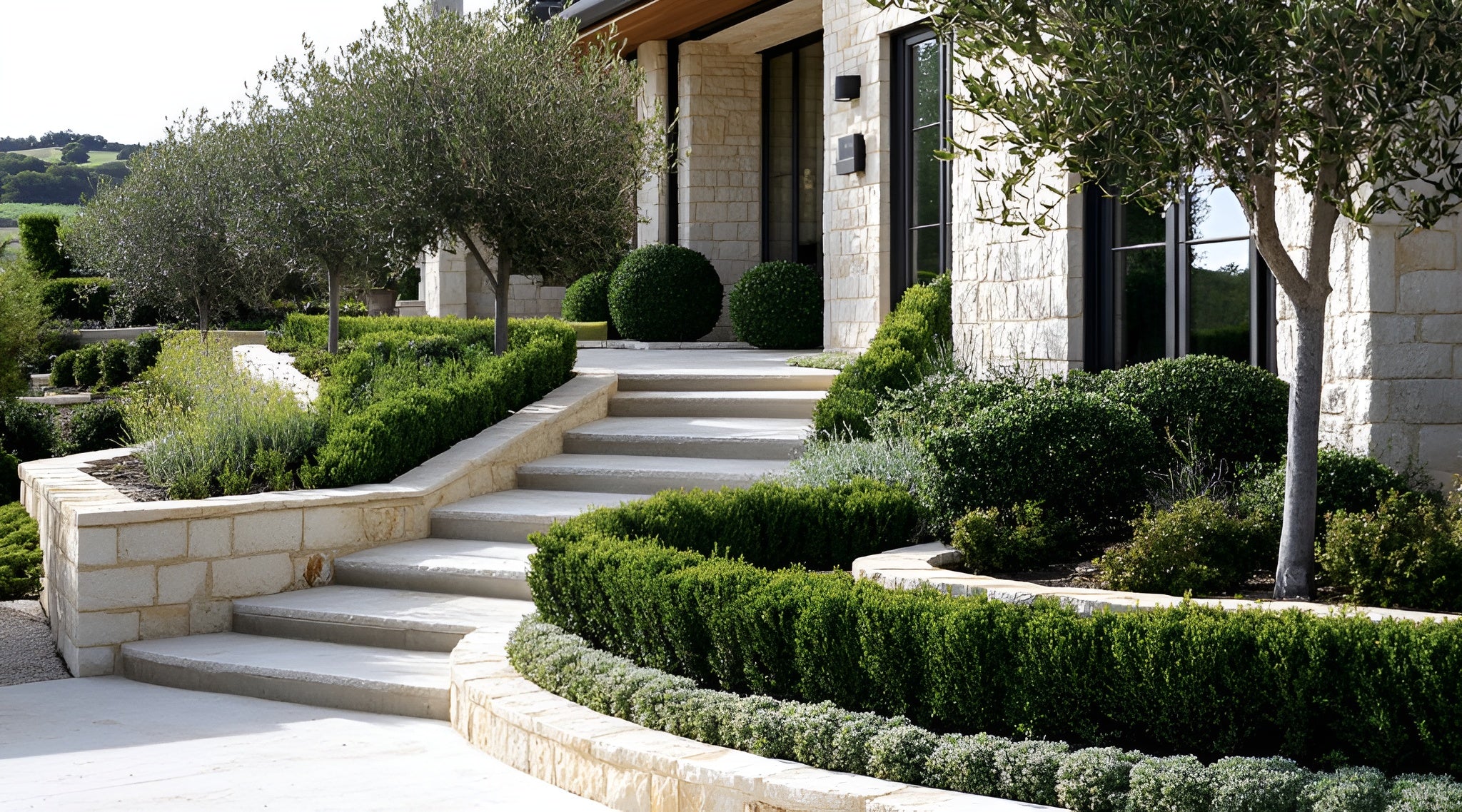Why Your Texas Landscaping is Struggling: Climate Realities
As a Texas resident, you've likely encountered the unique challenges of maintaining a thriving landscape in this region. From scorching summers to unpredictable winters, the Lone Star State's climate can be a true test for even the most seasoned gardeners and landscapers.
Understanding the intricacies of Texas's diverse climate zones, temperature fluctuations, and microclimate considerations is the key to unlocking the secrets of successful Texas landscaping.
In this comprehensive guide, we'll explore the climate realities that shape the growth and survival of your Texas landscaping plants. By delving into the USDA Hardiness Zones, temperature patterns, and the impact of extreme weather events, you'll gain the knowledge necessary to create a resilient and visually stunning outdoor oasis that can withstand the region's ever-changing conditions.
Understanding Texas's Challenging Climate Zones
When it comes to landscaping in Texas, understanding the diverse climate zones across the state is crucial. From the arid regions of West Texas to the humid subtropical areas along the Gulf Coast, the Lone Star State presents gardeners with a wide range of growing conditions to navigate. Exploring the USDA Hardiness Zones in Texas and the impact of temperature fluctuations on plants can help homeowners make informed decisions when selecting Texas landscaping plants and drought-resistant species.
USDA Hardiness Zones in Texas
Texas is home to a variety of USDA Hardiness Zones, ranging from Zone 6 in the Panhandle to Zone 9 along the southern coastline. This wide range of zones means that what may thrive in one region of the state may struggle in another. Homeowners must carefully consider the hardiness zone of their particular location when selecting Texas landscaping plants that can withstand the local climate conditions.
Temperature Fluctuations Impact on Plants
Texas is known for its dramatic temperature swings, with hot summers and occasionally frigid winters. These fluctuations can be challenging for many plants, leading to stress and potential damage. Understanding the impact of temperature extremes on plant growth and survival is essential for creating a resilient Texas landscape that can weather the state's climate changes.
Microclimate Considerations
Beyond the broader climate zones, homeowners must also consider the microclimate of their specific property when choosing drought-resistant plants for their Texas landscaping. Factors such as sun exposure, wind patterns, and soil conditions can create unique microclimates that influence a plant's ability to thrive. By carefully evaluating the microclimate, gardeners can select the most suitable Texas landscaping plants for their unique environment.
Common Signs Your Texas Landscape is Under Stress
As gardeners in Texas, we often face the challenge of keeping our landscapes healthy and thriving amid the region's harsh climate. Recognizing the common signs of plant stress can be the first step towards addressing these issues and preventing landscape deaths or xeriscaping fails.
One of the most visible indicators of plant stress is wilting. If your plants appear to be drooping or the leaves are curling, it could be a sign of insufficient water or excessive heat. Discoloration, such as yellowing or browning leaves, can also signal nutritional deficiencies or pest infestations.
Stunted growth is another telltale sign that your landscape is under duress. When plants are not able to thrive and reach their full potential, it's a clear indication that something is amiss, whether it's poor soil conditions, water restrictions, or other environmental factors.
By staying vigilant and addressing these landscape deaths and xeriscaping fails early on, you can take proactive steps to support your plants and ensure the long-term health of your Texas landscape.
The Impact of Extreme Weather Patterns on Garden Health
Texas landscapes are no strangers to the challenges posed by extreme weather events. From scorching heat waves to unexpected freezes and destructive storms, these environmental forces can have a profound impact on the health and survival of Texas landscaping plants. Understanding how to mitigate the effects of these extreme weather patterns is crucial for maintaining a thriving garden in the Lone Star State.
Heat Waves and Plant Survival
As temperatures soar during heat waves, Texas landscaping plants can face significant stress. Prolonged exposure to high heat and intense sunlight can cause leaves to wilt, stunt growth, and even lead to plant deaths. To help Texas landscaping plants survive these extreme conditions, gardeners should focus on providing ample shade, ensuring consistent soil moisture, and selecting heat-tolerant species native to the region.
Freeze Damage Prevention
While Texas is known for its warm climate, sudden cold snaps and freezing temperatures can wreak havoc on landscaping plants. Exposed plants may suffer from frost damage, leading to discoloration, dieback, or even complete loss. To protect Texas landscaping plants from freeze damage, gardeners should consider using covers, mulch, and strategic plant placement to insulate vulnerable species.
Managing Storm Damage
Severe storms, complete with high winds, heavy rain, and hail, can cause significant physical damage to Texas landscaping plants. Broken branches, uprooted trees, and flooded soil can all threaten the health and survival of a garden. Proactive maintenance, such as regular pruning and proper drainage, can help mitigate the impact of these extreme weather events and aid in the recovery process.
Water Restrictions and Their Effect on Texas Landscaping Plants
Texas gardeners face a unique challenge when it comes to maintaining a lush, thriving landscape. With the state's frequent droughts and water restrictions, many traditional landscaping plants struggle to survive. The impact of limited water resources on Texas gardens is significant, requiring gardeners to rethink their approach to plant selection and irrigation.
Water restrictions can have a detrimental effect on non-drought-resistant plants, leading to stunted growth, wilting, and even complete plant failure. Xeriscaping, the practice of using drought-tolerant plants, becomes an essential strategy for Texas homeowners seeking to create a sustainable and visually appealing outdoor space. However, even xeriscaping can falter if not executed correctly, as some drought-resistant plants may still require more water than the restricted supply allows.
To combat the challenges posed by water restrictions, Texas gardeners must carefully curate their plant selections, favoring native species and other drought-tolerant varieties that can thrive with minimal irrigation. By incorporating these resilient plants into their landscape design, homeowners can maintain a vibrant, low-maintenance garden even during the driest of times.
Soil Challenges in Different Texas Regions
Gardening and landscaping in Texas can be a unique challenge, especially when it comes to the diverse soil conditions found across the state. From the clay-heavy soils of East Texas to the alkaline-rich earth of the Hill Country, understanding the nuances of your local Texas landscaping plants' preferences is essential for their successful growth and survival.
Clay Soil Solutions
Many regions of Texas are known for their dense, clay-based soils, which can present a significant obstacle for Texas landscaping plants. To overcome this, it's important to amend the soil with organic matter, such as compost or well-rotted manure, to improve drainage and aeration. Incorporating sand or gravel can also help break up the compaction and create a more hospitable environment for your plants.
Managing Alkaline Conditions
In areas with high levels of calcium and other minerals, such as the Texas Hill Country, the soil can become alkaline, making it difficult for plants to absorb essential nutrients. To counteract this, gardeners can use sulfur or other acidic amendments to lower the soil's pH and create a more favorable growing environment for their Texas landscaping plants.
Improving Soil Structure
Regardless of the specific soil challenges in your Texas region, taking steps to improve the overall structure and health of the soil can go a long way in supporting the success of your Texas landscaping plants. This may involve regular additions of organic matter, strategic aeration, and even the introduction of beneficial microorganisms to help break down and enrich the soil.
Native vs. Non-Native Species: Making the Right Choice
When it comes to landscaping in Texas, the choice between native and non-native plant species is a critical one. Texas is home to a diverse array of native plants that are uniquely adapted to the region's challenging climate and soil conditions. By incorporating native Texas landscaping plants into your garden, you can create a thriving, low-maintenance landscape that supports local biodiversity.
On the other hand, non-native or invasive species can pose a significant threat to the ecosystem. These plants often outcompete native species, disrupting the delicate balance of the local environment. When planning your Texas landscape, it's important to carefully research and select plants that are well-suited to your specific region, as some non-native species may become invasive and cause harm to native habitats.
Successful native plant selections for different regions of Texas can include drought-tolerant species like Texas bluebonnet, Indian blanket, and Mexican hat. These plants not only enhance the natural beauty of your landscape but also provide valuable resources for pollinators and other wildlife. By prioritizing native Texas landscaping plants, you can create a sustainable, low-maintenance garden that thrives in the state's unique climate.
Common Mistakes in Texas Landscape Planning
Designing a thriving landscape in Texas can be a challenging task, as the state's diverse climate and unique soil conditions require careful planning. Regrettably, many homeowners and landscapers fall victim to common pitfalls that can lead to xeriscaping fails and even landscape deaths. Let's explore some of the most prevalent mistakes to avoid when planning your Texas landscaping.
Plant Spacing Errors
Incorrect plant spacing is a prevalent issue in Texas landscaping. Failing to provide adequate space for plants to mature can result in overcrowding, competition for resources, and an overall unhealthy landscape. Proper spacing not only allows for optimal growth but also promotes air circulation, which is crucial in the Texas heat.
Wrong Plant Selection
Choosing the right Texas landscaping plants is essential for success. Many homeowners make the mistake of selecting species that are not well-suited to the local climate, leading to poor performance and even plant mortality. It's crucial to research and select drought-tolerant, heat-resilient plants that can thrive in the unique conditions of your specific Texas region.
Improper Watering Techniques
Effective watering is a critical component of maintaining a healthy Texas landscape. Overwatering or underwatering can both have detrimental effects on plant health, causing issues such as root rot, water stress, and dehydration. Implementing an appropriate watering schedule and utilizing efficient irrigation methods can help ensure your Texas landscaping plants receive the right amount of moisture.
Drought-Resistant Alternatives for Traditional Landscaping
In Texas, where water restrictions and extreme weather patterns are increasingly common, traditional landscaping methods may no longer be sustainable. Fortunately, there are a variety of drought-resistant plants and xeriscaping techniques that can help transform your outdoor space into a vibrant, low-maintenance oasis.
Xeriscape, the art of landscaping with drought-tolerant plants, offers a practical and visually striking solution. Native species like the resilient Texas sage, the beautiful Blackfoot daisy, and the iconic prickly pear cactus thrive in Texas's diverse climate, requiring minimal water and maintenance. By incorporating these hardy plants, you can create a lush, water-wise landscape that not only withstands the region's challenging conditions but also showcases the natural beauty of the Lone Star State.
Beyond native plants, there are also a variety of non-native, low-water options that can seamlessly integrate into your Texas landscape. Olive trees, agave, and yucca plants add striking architectural elements, while flowering succulents like echeveria and sedum provide pops of color. By carefully selecting drought-resistant plants and implementing water-efficient irrigation systems, you can transform your outdoor living space into a sustainable, low-maintenance oasis that is both aesthetically pleasing and environmentally responsible.












0 comments